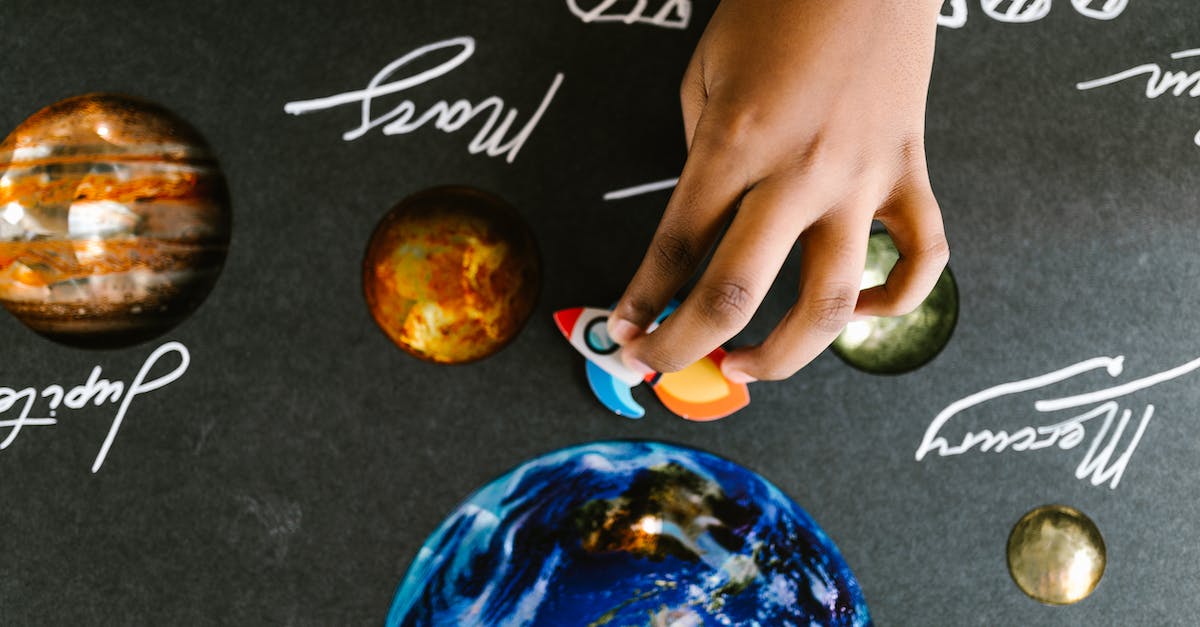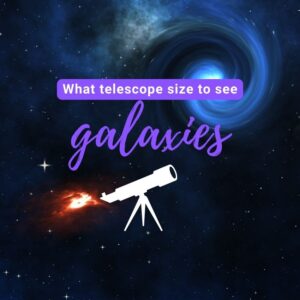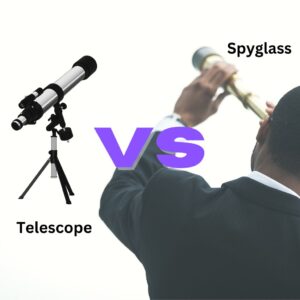This site contains affiliate links to products. I may receive a commission for purchases made through these links.
I’ve always been fascinated by the vast expanse of space. It’s a subject that’s not only intriguing but also offers endless opportunities for learning. Middle school is the perfect time to introduce students to the wonders of the universe, and what better way to do it than through fun and engaging space activities?
From building miniature rockets to creating their own constellations, space activities can ignite a student’s curiosity and foster a love for science. It’s not just about learning facts and figures. It’s about experiencing the thrill of discovery and understanding our place in the universe.
So, let’s dive into the world of space exploration and find out how we can make learning about space an exciting adventure for middle school students. After all, who knows? We might just inspire the next generation of astronauts and astronomers.
Why space activities are important for middle school students
Passion for space might just seem like a fascinating hobby but it’s so much more than that. When middle school students engage in space activities, they’re not just learning about planets and stars. They’re embarking on a journey of exploration and discovery that can significantly impact their academic and personal development.
Understanding space and the universe is not simply an aggregation of facts and figures. It’s about context, perspective, and the thrill of discovery. It’s about realizing our place in a much wider context. And guess what? Middle school students thrive on that!
Working with telescopes, observing celestial bodies, or even building rocket models – these are not mere tasks. They are experiences that trigger curiosity, encourage critical thinking, and foster problem-solving skills. They’re real-life applications of what children learn in math, physics, and technology. They provide a hands-on approach to learning that engages students on a different level than traditional classroom instruction.
The whole concept of space speaks to the naturally inquisitive nature of middle schoolers. They enjoy hypotheses, predictions, and analyses. They take joy in solving mysteries and space presents plenty of them! It also presents analogies that can be applied to everyday life, making abstract science concepts easier to understand.
Let’s look at some numbers. A study conducted by the National Aeronautics and Space Administration (NASA) shows that students involved in space-related activities demonstrate:
- Better understanding of science concepts
- Improved problem-solving skills
- Higher interest in pursuing science careers
Here’s a representation of the data:
| Skills/Interest | Percentage Increase |
|---|---|
| Understanding of concepts | 40% |
| Problem-solving skills | 35% |
| Interest in science careers | 30% |
Keep in mind, space activities do not have to end in the classroom or the science lab. In today’s technological era, there are countless online resources, games, and applications that can continue to feed a student’s fascination and knowledge about space. So, let’s keep fueling that curiosity – after all, we might just be inspiring future astronauts and astronomers.
Activity 1: Building model rockets
When I think about the best way to ignite the minds of middle school students for space studies, building model rockets surfaces as a top activity. It’s captivating, exciting, and stimulating – a perfect blend for youthful curiosity.
Engaging students in the construction of model rockets involves them in the fundamental aspects of science and engineering. For starters, they’ll learn that rockets are not simply flaming tubes shooting into the sky.
The model rocket project begins with explaining the basic concept of rocket propulsion – a fundamental principle named Newton’s third law of motion. Simply stated, for every action, there’s an equal and opposite reaction. It’s the working basis for real-life rockets. Such practical demonstration of scientific principles holds potential for stronger retention compared to traditional textbook learning.
Building model rockets is far from a boring, stand-alone task. It requires delicate handicraft, precision, collaboration, and offers plenty of room for creativity. The shape, size, and decorative elements of the model are entirely up to students’ imagination. The activity embraces the diversity of our universe – each rocket is unique as the real cosmic bodies up in the space.
On launch day, excitement fills the air. This is not only the climax of the model rocket project, but also a lesson in the practical use of mathematics. Trajectory, speed, and landing – these calculations breathe life into previously learnt mathematical concepts.
As their eyes follow the climbing rocket trails in the sky, students indirectly grasp a sense of the vastness of our universe. The burst of joy when a rocket launches and the anticipation of its return can seldom be matched by an ordinary class lecture.
A quick look at NASA’s educational resource site reveals the true popularity of this space activity. A list of tips and guides helps ensure the safe and successful crafting of model rockets. Online communities host rocket model-building competitions, offering an extended platform for students to showcase their talent and learn from others.
Successes and failures in building model rockets fall hand in hand, teaching persistence and problem-solving. After all, learning the ‘Science of Space’ mirrors the process of exploration itself – filled with uncertainties, challenges, and moments of triumph.
Activity 2: Exploring the solar system with virtual reality
Let’s delve into the boundless universe from a totally new perspective with our next suggested activity: exploring the solar system using virtual reality (VR). The immersive nature of VR offers a fantastic opportunity for middle school students. It lets them experience space travel firsthand without leaving the confines of their classroom.
It’s pretty evident that trips to space are currently beyond our average student budget! However, increasingly affordable VR technology makes the impossible quite attainable. It’s not simply about experiencing the thrill of a rocket launch or walking on the moon. VR facilitates a virtual exploration of the solar system in a way that textbooks or even the best space documentaries cannot match.
VR allows students to visualize and understand complex scientific concepts much better. Got confused about the concept of gravitational pull? Stand next to Jupiter’s massive form, and see how its size influences its gravitational field. Barely understand how Mars’ thin atmosphere works? Step onto its dusty soil and observe how the sunlight is different compared to Earth. VR provides concrete, visual representations that can aid comprehension immensely.
Of course, with the world of VR, the educational possibilities are infinite. Many VR apps and resources are designed with education in mind. These offer guided tours of the Milky Way, interactive astronomy lessons, and even simulated journeys to the outer edges of our solar system. One example is NASA’s VR app, which allows students to roam around the International Space Station.
But remember, while VR might add that extra ‘oomph’ to your lessons, it’s vital not to rely solely on this technology. Virtual reality should complement traditional teaching methods, not replace them. So, incorporate it judiciously – let the students learn from, get excited about, and feel inspired by these extraordinary space explorations. Ultimately, kids should feel the connection with science in a more hands-on, personalized and interactive way.
Activity 3: Creating constellations and learning about star patterns
Our next adventure into the cosmos includes creating constellations and learning about star patterns. This activity is not only a fun, hands-on project but also a way to immerse students into the ancient world of astronomy. It’s a direct link to our ancestors who, thousands of years ago, connected the stars to create myths and navigate the world. Understanding constellations can give students a sense of continuity with the past and a connection to the cultures that first named these star patterns.
Students can begin by replicating classic constellations. One way to do this is by poking holes that represent stars into a black piece of cardboard, and then shining a flashlight behind it. This project will involve converting the two-dimensional images of constellations they see in books or online into a three-dimensional model, requiring them to critically think and problem-solve.
NASA’s Night Sky Network offers excellent resources for creating constellations and learning about their myths and significance. Their site provides printable constellation guides and adventure toolkits that can be used for this activity.
Diving deeper into constellations allows students to learn about star patterns known as asterisms. Many cultures have formed their own asterisms like the Summer Triangle or the Northern Cross. Learning about how different cultures perceive the same sets of stars can be an engaging lesson in diversity and perception.
However, it’s important to note that this activity should supplement, not replace, traditional classroom instruction. It’s meant to make students feel more connected to the science they’re learning by providing hands-on, interactive experiences.
While model rockets and VR exploration of the cosmos present students with more advanced topics in space science, creating constellations and learning about star patterns brings them right back to the basics. It’s a gentle reminder that the wonders of the universe are not only about staggering numbers and vast expanses, but also about the simple and profound beauty of a starlit night sky.
Activity 4: Designing a Mars habitat
Another intriguing activity for middle school students is designing a Mars habitat. In this activity, your students will gain an understanding of the various challenges faced when planning living conditions for humans in a space environment.
Let’s begin exploring the details of this activity. Designing a Mars habitat requires students to consider essential elements like adequate living space, availability of food and water, and handling waste.
Your students can start by researching on real-life Mars habitat designs. NASA’s Mars Habitat Challenge is a great resource for this. This can be performed in groups or individually depending on your setup. The key is to encourage critical thinking and problem-solving skills.
We then take it a step further. After initial research, ask your students to sketch their creative ideas. These can be detailed drawings or simple sketches. They should showcase considerations for living arrangements, food supply, waste management, and solar power systems. This part of the activity should really push their astro-biology and engineering understanding.
Encourage your students to think outside the box. Solutions that might seem obvious here on earth might not be applicable on Mars. Like the role of Gravity – it’s not the same on Mars. Is it possible to grow food in a reduced gravity environment? What about the lack of liquid water on the surface of Mars? How would waste be handled in such circumstances?
Consequently, these challenges can lead to productive cross-curricular links to biology, chemistry, physics, and design. This Mars Habitat activity is an exceptional method to understand the impact of engineering solutions in an alien environment.
Remember, this activity isn’t just about technical aspects. It’s about exploring possibilities and humans’ potential to thrive on Mars.
By the end of this activity, your students will have experienced a slice of the entire process that goes into space exploration, fueling their curiosity, and potentially sparking future interests in the field of space exploration. Isn’t it fascinating to see where their imagination and creativity can take them?
Conclusion
So there you have it. Our Mars habitat design activity is a fantastic way to engage middle school students in space exploration. It’s not just about dreaming big – it’s about applying real-world concepts and skills. By considering the necessities of life on Mars, students get a taste of the challenges that space explorers face. This activity encourages creativity and critical thinking, while also creating opportunities for cross-curricular connections. It’s a small step towards understanding the vast universe, but a giant leap in sparking our students’ interest in space. Who knows? This activity might just inspire the next generation of astronauts and space scientists. So let’s keep exploring, learning, and reaching for the stars.
Frequently Asked Questions
What is the new activity introduced for middle school students?
The new activity introduced consists of designing a habitat for Mars. This educational exercise offers students insights into the challenges of planning suitable living conditions in a space environment.
How does this activity support student learning?
This activity advances students’ critical thinking and problem-solving skills. As they sketch their habitat designs, students are urged to think creatively and innovatively, rather than strictly adhering to conventional approaches.
What are the key elements students need to consider while designing the Mars habitat?
Students are prompted to ponder over essential elements of a survival habitat, such as the availability of living space, food and water resources, waste management solutions, and solar power systems.
Can the Mars habitat design activity connect to other school subjects?
Yes, the challenges presented in this activity can create cross-curricular ties to biology, chemistry, physics, and design, reinforcing the relevance and applicability of these subjects.
How does this activity link to space exploration?
The Mars habitat design project provides students with a glimpse into the ongoing process of space exploration. They get to participate in a simplified version of the challenges and considerations scientists undertake during the planning stages of a Mars mission.



